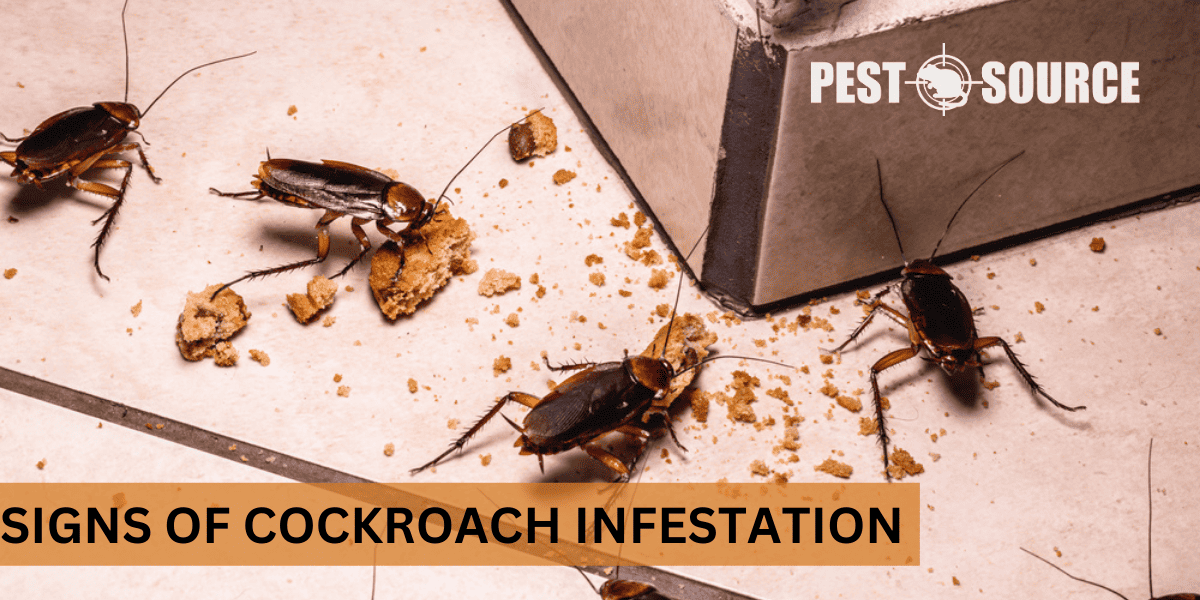Key signs of a cockroach infestation include seeing live or dead roaches, droppings, egg cases, and a distinctive musty odor. Recognizing these signs early is crucial for timely intervention. This article outlines how to identify and address a cockroach infestation effectively.
POINTS
- Recognize signs of cockroach infestation such as live or dead cockroaches, droppings, egg casings, unusual odors, smear marks, damaged food packages, unusual sounds, and allergic reactions or asthma flare-ups.
- Cockroach droppings, which can look like ground pepper or coffee grounds, are a clear indicator of their presence and activity levels.
- Cockroaches typically hide in dark, moist, and warm areas, including behind appliances, under sinks, and within cracks and crevices. Nighttime is the best time to check for these pests due to their nocturnal nature.
- Assessing the severity of an infestation involves noting the frequency of sightings and spread of signs, and severe infestations or ineffective home remedies necessitate professional pest control services.
- Prevent future infestations with proper food storage, regular cleaning, sealing entry points, and considering integrated pest management strategies for long-term solutions.
Signs of Cockroach Infestation and Their Implications
Cockroaches are not just a nuisance, but they can also pose significant health risks by spreading diseases and triggering allergies. Recognizing the signs of a cockroach infestation is crucial for maintaining a healthy living environment. Here are the most definitive signs that suggest you might be sharing your space with these unwelcome guests.
Sightings of Live or Dead Cockroaches
If you’re seeing live cockroaches scurrying around during the day, it’s a red flag. These pests are inherently nocturnal, so daytime activity usually means their hiding spots are full to the brim, forcing some to venture out. Similarly, stumbling upon dead cockroaches can be equally telling of an underlying problem.
Cockroach Droppings
One of the most telltale signs of a cockroach presence is their droppings. Resembling black pepper or coffee grounds, these droppings can vary in size and are often concentrated near their nesting areas. The amount of fecal matter can give you a good indication of the infestation’s extent.
Egg Casings (Oothecae)
Cockroaches are prolific breeders, laying numerous eggs within a single casing called an ootheca. These casings are typically reddish-brown or dark brown and finding them within your home is a clear indicator of an infestation that could soon grow in number.
Unusual Odor
A heavy cockroach infestation often comes with a distinctive, musty smell. This unpleasant odor is persistent and can seep into items like food or clothing, indicating a large and potentially long-term cockroach problem.
Smear Marks
In areas with a lot of moisture, cockroaches will leave behind smear marks. These marks are created as they crawl around and can be another sign of their presence.
Damage to Food Packages
Cockroaches aren’t picky eaters and will chew through packaging to get to food. Visible damage to food packages in your pantry or kitchen is a strong sign that cockroaches are present and feasting at your expense.
Unusual Sounds
In the quiet of the night, a significant cockroach infestation might even be heard. A faint rustling sound could emanate from places where these pests congregate and move about.
Allergic Reactions or Asthma Flare-ups
Cockroach droppings, saliva, and shed skin can be potent allergens. If you or your family members experience sudden allergic reactions or asthma flare-ups, it could be due to the presence of cockroaches, especially if these symptoms occur predominantly at home.
Recognizing these signs early can help you act swiftly to control and prevent a full-blown cockroach infestation.
Recognizing Cockroach Poop
Cockroach poop is a clear sign of their activity. Here’s how to tell what cockroach poop looks like.
- Size and Shape: Small roaches produce droppings that look like ground pepper or coffee grounds, while larger roaches leave cylindrical droppings.
- Location: Look for droppings in kitchen cabinets, along drawer tracks, and near water sources like sinks.
- Implications: The quantity of droppings often indicates the level of infestation. More droppings typically mean a larger or more active infestation.
Significance of Finding Egg Cases and Musty Odors
Egg cases and shed skins from cockroaches are not just evidence of their presence but also of their potential to multiply. A musty odor can pervade your home, indicating a sizable infestation that needs immediate attention. These signs are significant as they can help you gauge the urgency of the situation.
Hiding Places, Nocturnal Behavior, and House Infestation Indicators
Cockroaches prefer dark, moist, and warm areas to hide. Common hiding places include:
- Behind kitchen appliances like refrigerators and stoves
- Under sinks and in bathroom cabinets
- Inside cracks and crevices in walls and flooring
Understanding that cockroaches are nocturnal can help you determine the best times to check for these pests. Nighttime is when they are most active, so you might want to inspect for signs of infestation after dark.
When inspecting your home, focus on areas where food and water are readily available, such as kitchens and bathrooms. These are the most common hotspots for cockroach activity.
Cockroach Infestation in Furniture and Behavioral Indicators
Cockroaches are not limited to hiding in the nooks of your kitchen or bathroom; they can also take refuge in your furniture. Here’s how to detect their presence in these areas.
Detecting Cockroaches in Furniture
- Droppings: Check for droppings inside drawers, along the corners of furniture, and underneath pieces that are rarely moved.
- Oily Odor: An oily, musty smell emanating from furniture can be a sign of a hidden cockroach nest.
- Egg Casings: Finding egg cases stuck in the crevices of furniture is a surefire sign of infestation.
Daytime Sightings and Behavioral Changes
Seeing cockroaches during the day can be alarming. It usually means the infestation has reached a point where the cockroaches are competing for space and resources, pushing some into the open.
Environmental Signs of Cockroach Activity
- Grease Marks: Cockroaches can leave dark grease or smear marks along walls or floors as they travel.
- Smear Marks: In areas with high moisture, these pests leave smear marks, which are the result of their bodies coming into contact with surfaces as they move.
Assessing the Severity of an Infestation and Professional Treatment Options
To assess the severity of a cockroach infestation, consider the following criteria:
- Frequency of Sightings: Regularly seeing cockroaches could indicate a large population.
- Spread of Signs: Finding droppings, egg cases, or smear marks in multiple areas suggests the infestation is widespread.
Seeking Professional Pest Control
When the infestation is severe or home remedies fail, it’s time to seek professional pest control. Experts like Orkin use a comprehensive approach that includes:
- Inspection: A thorough examination of your home to identify the extent and source of the infestation.
- Treatment: Application of appropriate control methods, such as baits, traps, and insecticides get rid of cockroaches.
- Follow-up: Regular visits to ensure the infestation is under control and to prevent future occurrences.
Preventive Measures and Long-term Solutions
Prevention is key to ensuring cockroaches don’t become a recurring problem. Implement these tips:
- Proper Food Storage: Keep food in sealed containers and avoid leaving pet food out overnight.
- Regular Cleaning: Clean up crumbs and spills immediately, and keep your home clutter-free to minimize hiding spots.
- Seal Entry Points: Caulk cracks and crevices, fix window screens, and install door sweeps to deter entry.
Long-term Solutions
For lasting results, consider these strategies:
- Regular Inspections: Periodically check for signs of cockroaches, especially in high-risk areas.
- Integrated Pest Management (IPM): This approach combines physical, biological, and chemical methods to manage pests in an environmentally sensitive way.
By staying vigilant and adopting these preventive measures, you can greatly reduce the chances of a cockroach infestation taking hold in your home. Remember, the key to effective pest control is early detection, immediate action, and consistent prevention.



